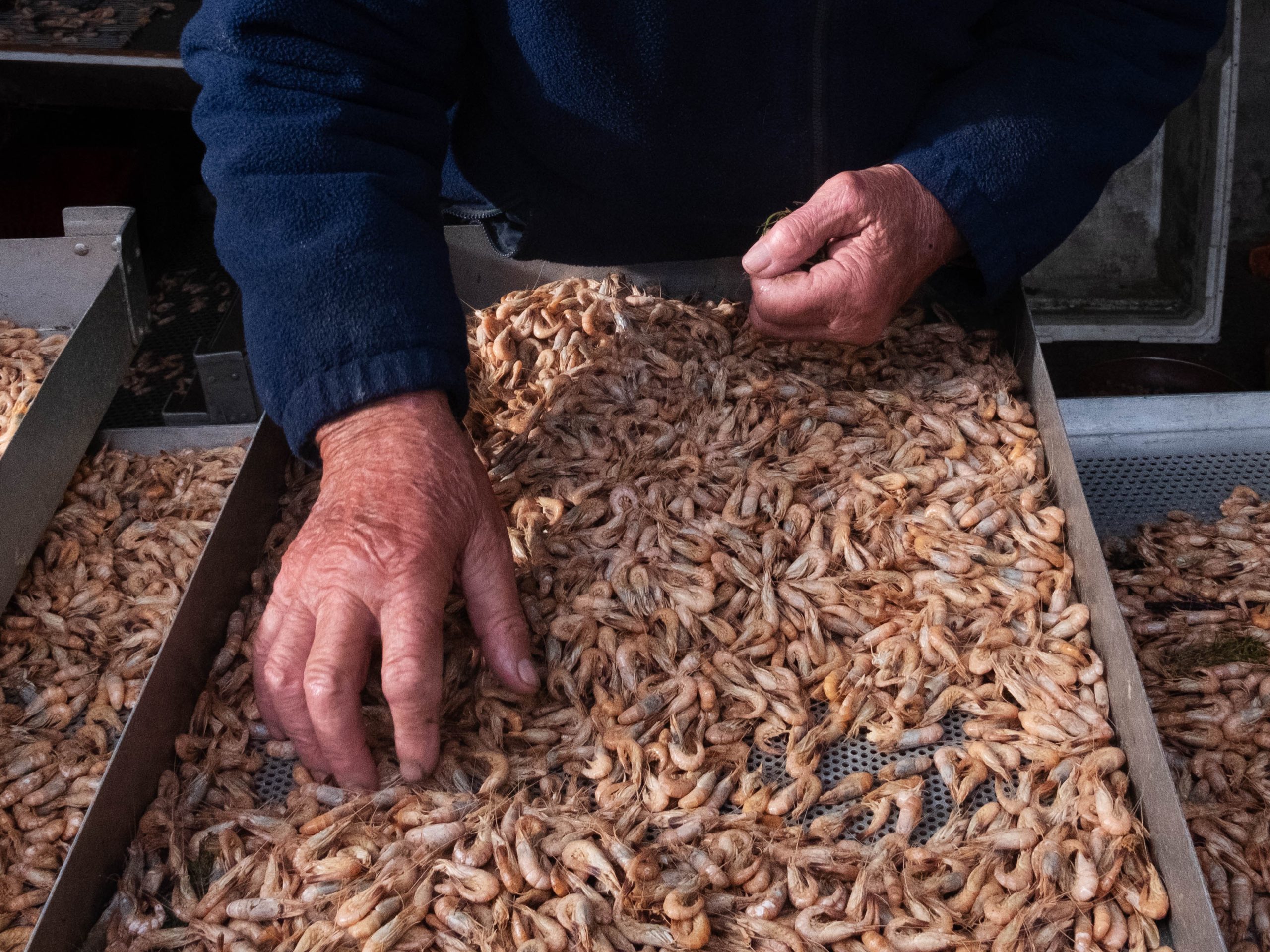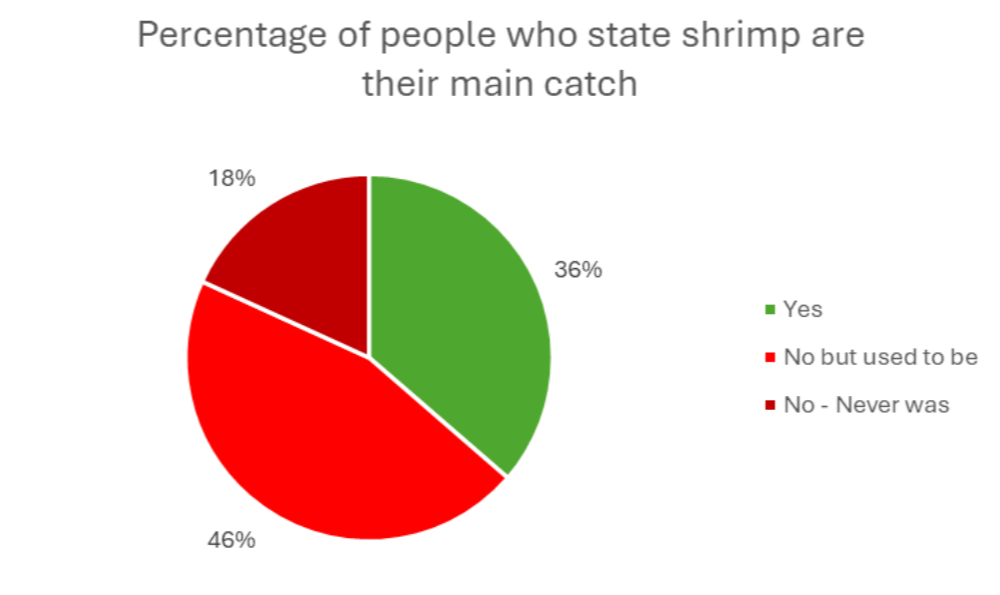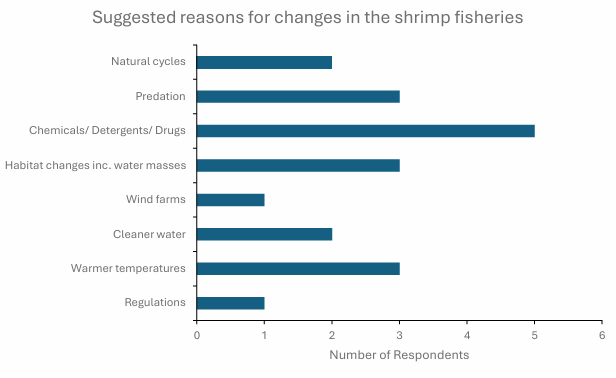
Shrimps
Shrimp Research 2024/25
Background
The brown shrimp fisheries in the North West of England are artisanal fisheries with a long history and community connection. Shrimp have long been an important income source for many areas of the district and the popularity of ‘Morecambe Bay Potted Shrimp’ has created a high demand. However, over the past several years, industry have had growing concerns regarding a decline in both the quantities and size of shrimp, and the impacts this is having on their livelihoods.
The NWIFCA have completed an initial report on the status of the brown shrimp fisheries; the objective of this study was to gain a greater understanding of the current state of shrimp fisheries and their decline in the North West. To identify the main fishers and their views on the matter, and identify the key knowledge gaps where further research could be focussed.
To achieve this aim, the project was broken down into three stages:
- Collate the most recent information regarding the biology and life history of shrimp and any relevant research on its declines via a literature review
- Investigate the past and current state of the shrimp fisheries, including evidence of historical declines from statistical reports and fisher feedback via a questionnaire: and
- Identify the potential avenues for further studies to assist our understanding and management.
Key findings
Historical data demonstrates that shrimp fisheries in the North West have experienced significant declines from their peak pre-1975 when landings reached approximately 600 tonnes per year, to around 12 tonnes in 2022.

Shrimp landings in the NWIFCA District from 1975-1992 (MAFF Fish Stats) and 2012-2022 (MMO Data). This graph includes data from ports within the NWIFCA district.
A sharp decline was observed in the late 1980s and landings have not recovered since. This decrease has subsequently lead to a reduction in the number of fishers and associated pickers involved in the fishery. Today, only around 18 people are involved in the fishery.
Tractor trawling is now the predominant form of fishing in the district with around half of stakeholders using this method, followed by vessels and push nets.
Data from tractor landings is limited, however, a decrease in shrimp abundance is apparent from both vessel landing data and fishers’ testimonies
A reduction in effort is evident with fewer fishers exploiting the fishery compared to historical records and many current fishers exploiting the fishery for a lesser amount of time annually than in the past.
A large proportion of stakeholders noted that shrimp was once their main catch, but now no longer is due to declines. The main causes for decline were thought to be related to water temperature, water quality and habitat change.


Further research opportunities
Changes in temperature, nutrient concentration and chemicals within the water
Changes in predator abundance
Investigating the geography and population dynamics of brown shrimp in the district
Potential management
Improved monitoring of data-poor sectors of the fishery, such as tractor shrimpers
Establishing a shrimp working group with fishers to identify opportunities for data gathering
The study reveals knowledge gaps in understanding the decline in shrimp in the North West. The NWIFCA plans to collaborate with academic institutions on research projects, develop an internal research plan and improve monitoring of shrimp stocks.
The full report can be found here: